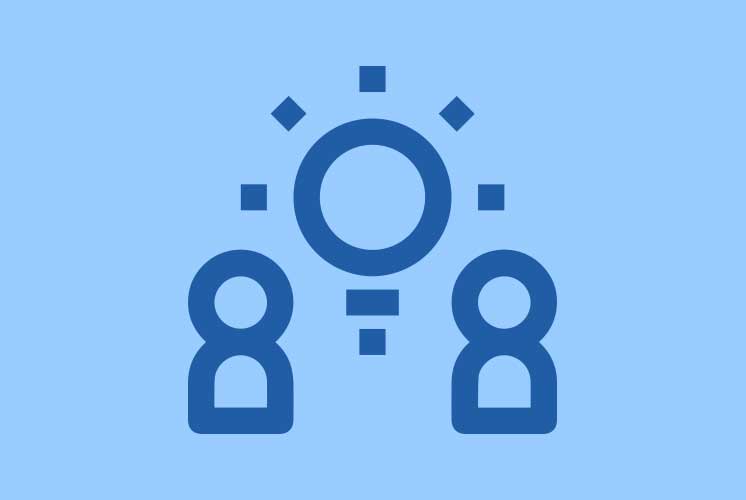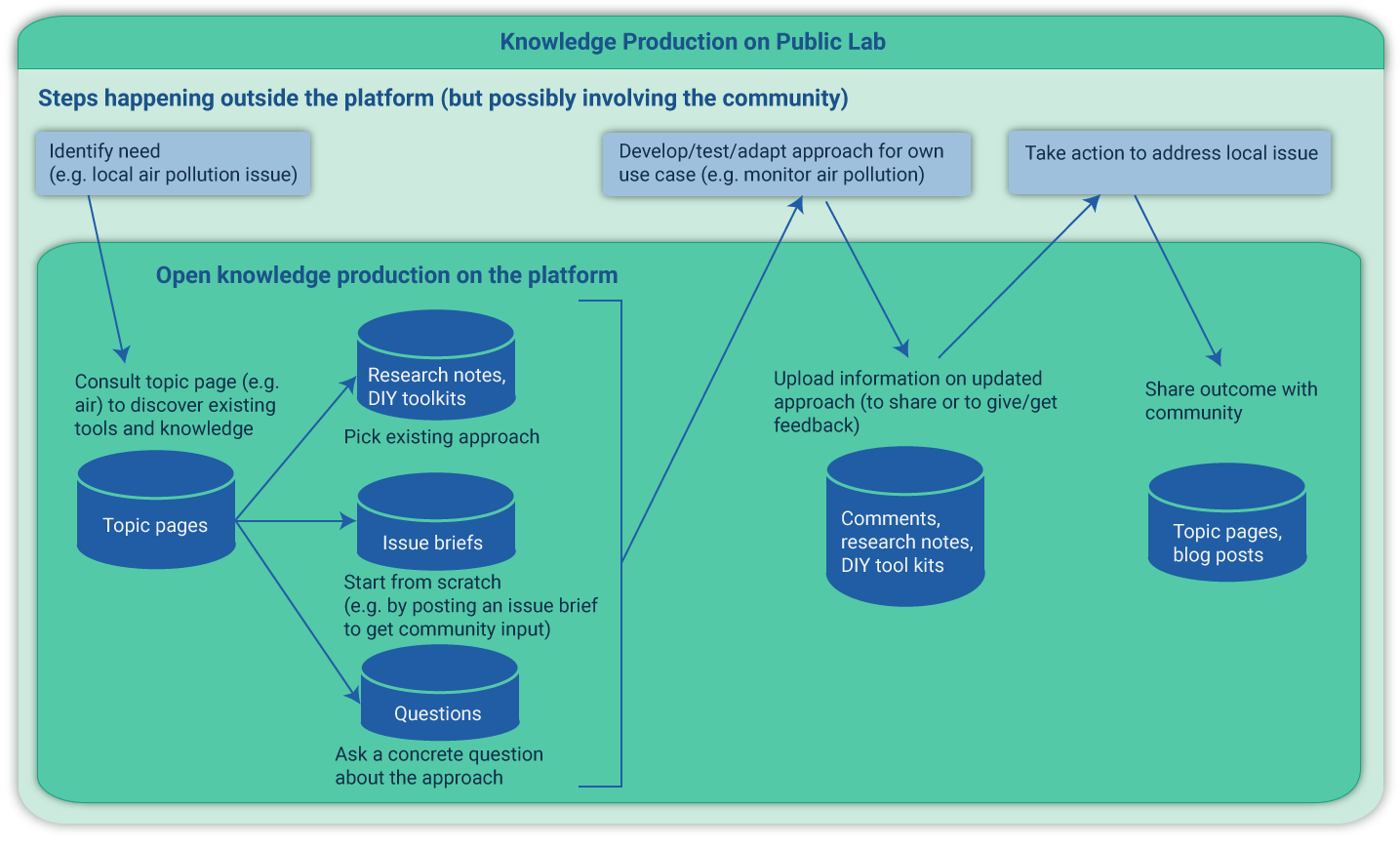Knowledge production flow on Public Lab

(Wondering how to add your blog posts to this blog? Have a look here: Get involved)
What platform are we talking about?
Public Lab aims to empower people to address environmental justice issues through community science and open technology. They focus on the collaborative development, sharing, reuse and adaption of DIY scientific tools.
What is a knowledge production flow?
A knowledge production flow summarizes the basic steps users take when interacting with the platform in order to produce knowledge. The steps were identified using a method similar to a cognitive walkthrough. A cognitive walkthrough is a usability inspection method focussing on a user’s problem solving process, assuming exploration of the website as the main learning strategy. In our case, the focus was not on usability, but on understanding the knowledge creation process and on the existence of peer production elements. Modeling the knowledge production process in this way helps to identify how users interact with the platform and if and how they collaborate during their work - an important step to see if and how peer production takes place on the respective platform, and if there are ways to increase peer production if wanted.
How does knowledge production work on Public Lab?
On Public Lab there are numerous shared research artifacts*, ways and entry points to contribute to knowledge building. All content is open and community-created. An exemplary complete knowledge production flow (see Figure 1) could start with an individual identifying an environmental justice issue in their local environment that they would like to act on. An imaginary example could be a problem with air pollution that might be caused by a factory in the vicinity. The individual could then access Public Lab’s topic page for air quality, which is a collection of all research notes, questions, wiki pages tagged with and users working on air quality. Depending on the existing content and the prior knowledge of the individual, they could pick an existing approach, e.g. instructions for building an air quality monitoring tool, or post a question or an issue brief to get general inputs on how to address their problem. Once they applied, tested and developed their approach, users are encouraged to upload their experiences in the form of comments or research notes. This can involve several iterations of testing and improving their methods. The user could then, on their own or with help of the community, record and analyse their data and try to take action to solve their issue. Results of these projects can be shared in the form of blog posts or wiki pages. Users are also free to take part in only one or more of these steps, and enter the knowledge production cycle wherever they like.
*“Artifacts are discreet, observable, namable representations of ideas, such as articles, research notes, books, databases, maps, computer files, and web pages.” (Hess and Ostrom, 2003). In (citizen) science, the artifacts created can also be called digital research objects (Bechhofer et al., 2010).

Thoughts
The Public Lab platforms offers users the possibility to work on a wide range of tasks from the research cycle, from specifying a problem, creating research tools and protocols, over analyses and reports of applications to local issues. Users can contribute to smaller and bigger tasks, from liking a post, to uploading a whole research protocol or finding ways to solve a local environmental problem. However, there is no way to upload or analyse data directly on the platform. Apart from this lack of possibilities to directly work with data on the platform, one other point that could be improved is that, despite the efforts to connect related content with tags, it is not evident to find research projects conducted from start to finish, even though many of them exist, as apparent in Public Lab’s blog section. As of now, Public Lab, at first sight, resembles more a collection of instruction manuals for DIY research tools, ordered by environmental topics, than a collection of research projects. Nevertheless, Public Lab is an example illustrating a peer production approach in citizen science. There are many features to allow users to cooperate by giving each other feedback, reusing or building upon other user’s work (see other articles on Public Lab for more information). By offering a wide range of tasks, as well as features that actively encourage newcomers (like issue briefs), Public Lab has potential to attract users from a wide range of backgrounds, motivations and skills.
References
- Public Lab website
- Kloppenborg, K., Ball, M. P., & Greshake Tzovaras, B. (2021, May 23). Peer Production Practices: Design Strategies in Online Citizen Science Platforms. https://doi.org/10.31235/osf.io/rw58y
On usability and cognitive walkthroughs
- Hollingsed, T., Novick, D.G., 2007. Usability inspection methods after 15 years of research and practice. In: Proceedings of the 25th Annual ACM International Conference on Design of Communication - SIGDOC ’07. Presented at the the 25th annual ACM international conference, ACM Press, El Paso, Texas, USA, pp. 249-255. DOI: https://doi.org/10.1145/1297144.1297200
- Nielsen, J., 1994. Usability Inspection Methods. Presented at the Conference Companion on Human Factors in Computing Systems, pp. 413–414.
- Wharton, C., Rieman, J., Lewis, C., Polson, P., 1994. The cognitive walkthrough method: A practitioner’s guide. In: Usability Inspection Methods. pp. 105–140.